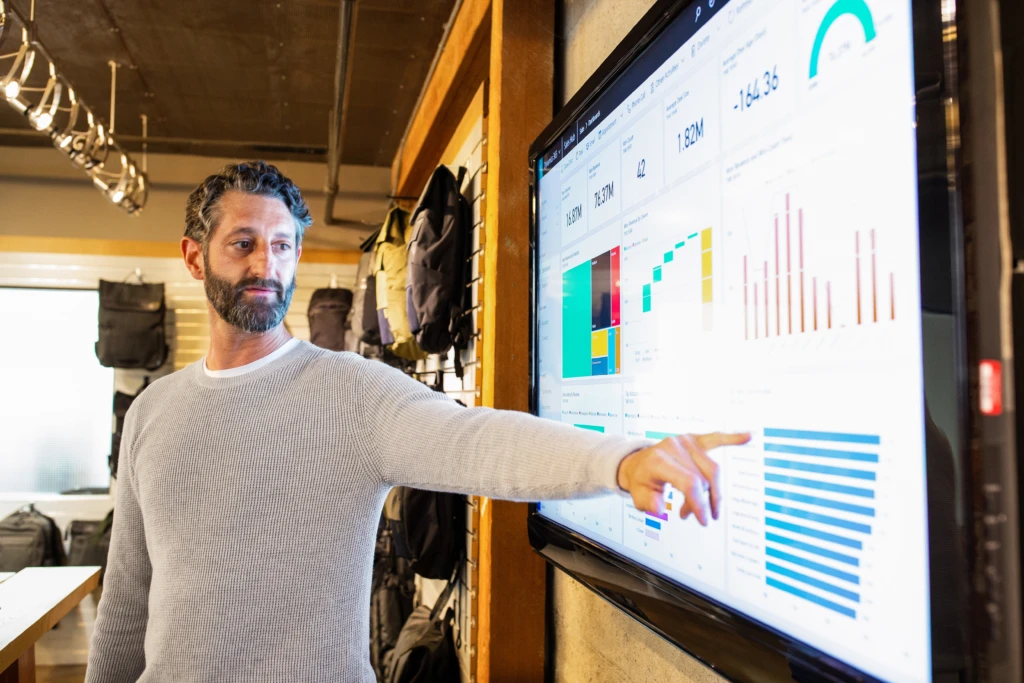
Top 3 customer data platform trends for 2021
Despite significant headwinds in 2020—a global pandemic, economic downturn, and technology budgets clipped—customer data platform (CDP) growth is booming. Businesses are charging full steam ahead on digital transformation efforts as their customers have dramatically moved toward online channels. According to a McKinsey Global Survey of executives, organizations across sectors and geographies are likely to report a significant increase in remote working, changing customer needs, and customer preferences for remote interactions.
Here is a deeper look at the three major trends that will impact how businesses think about customer experiences moving forward, and how a powerful, real-time customer data platform like Microsoft Dynamics 365 Customer Insights can help you bring together transactional, behavioral, and demographic data to create a 360-degree view of your customers.
1. The physical will become digital
Increasingly, we are moving into an era where almost everything we see will have the potential to become a transaction. From social media to streaming channels to in-store—when it comes to selling online or offline, it’s no longer one or the other. E-commerce gets physical with augmented reality, while stores go digital.
Augmented reality enables online shoppers to take part in bespoke, store-like experiences and try products virtually, while AI-powered personal assistants round out the experience with individualized recommendations. On the other hand, the transformation of the traditional retail space will continue as a new breed of “stores without walls” will go beyond the confines of the physical space to create a blended experience; an experience that allows in-store customers to find and order out-of-stock products online or receive location-targeted texts about items they have browsed online that are available in the store.
2. Personalization will be built in partnership
Customer experience is developed over a series of touchpoints along the customer journey that requires tight cross-functional alignment. 2021 is the year where customer experience teams will join forces—uniting marketing, sales, service, commerce, and IT—to drive customer experience initiatives. A crucial part of this partnership is breaking down silos through shared access to data and analytics that offer real-time visibility. Collaboration across departments will enable businesses to serve customers intelligently all the way from acquisition to checkout and delivery.
3. Agile and integrated technologies will pave the way
Maintaining strong customer experiences require a real-time pulse on changing customer preferences and agile innovation to address them. Businesses will continue to invest in modern and adaptable technologies that meet global sustainability goals and uphold data security and privacy standards. These technologies will push the envelope as they become increasingly agile, operate in real-time, and integrate with everyday business applications. Think about AI-powered virtual agents for self-service, conversational interfaces, or augmented reality to help improve first-time fix rates and conduct remote audits—all while lowering costs and minimizing carbon footprints by avoiding unnecessary travel.
CDPs provide a foundation for personalization
As businesses seek to raise their digital game and transform customer experiences, CDPs deliver on the promise of building a rich customer view with an end-to-end look into the customer journey. Let’s see why CDPs are becoming an essential part of the tech stack and how they power personalized experiences at scale:
- Adapt to the audience
Eighty-one percent of customers want brands to get to know them and understand when to approach them and when not to, according to Accenture. CDPs break down the organizational and technology system silos by unifying the ever-increasing volume of data from all sources, including traditional sources like campaigns, transactions, and calls, and emerging sources like social shopping, augmented reality, virtual agents, and chatbots to create the 360-degree view of the customer. Machine learning models and built-in AI help cluster customer profiles to identify high-value and at-risk customers and recommend relevant products and services. This adaptive modeling and nimble decision-making empowers businesses to scale personalized interactions in real time.
- Center customers with care and empathy
Customer empathy means understanding their needs—including what really matters to them, the worries, and aspirations they have—and it’s crucial for building strong customer relationships. While empathy has traditionally been limited to in-person interactions, digital empathy requires customer insights. Data is the primary way to listen to your customers and regardless of the system of engagement, CDPs help capture both explicit and implicit signals about customer behavior and intent. Advancements in machine learning have made it possible to interpret new kinds of data and even extrapolate the emotion from an interaction. With the right customer insights, businesses can apply empathy to digital interactions to not only enhance the quality of service but also help customers feel good about their interactions.
- Make personalization even more personal
The customer experience is not linear—it includes the touchpoints that a company has created as well as touchpoints owned by different providers, often with no way of connecting and accessing information about these interactions. The dream that businesses are striving for is seamless, omnichannel personalization. They are putting customers at the center and creating value at every step, facilitating a consistent journey, regardless of channel. CDPs make it possible for businesses to craft the right offers, messages, and experiences at speed. The AI-powered insights and analytics keep a real-time pulse on changing customer preferences; enabling the redesign of journeys and interactions to nurture demand, drive higher quality leads, and tailor content to fit the customer.
- Earn trust that drives loyal, lifelong customers
Tightening restrictions on data collection has made it difficult to personalize messaging. Regulatory bodies have increased standards and pressure to meet global sustainability goals and minimize carbon footprints. It’s imperative to reinforce the ethical usage of data and discover new ways to improve customer experiences while respecting the people behind the data. CDPs centralize and streamline the customer data infrastructure, helping build trust and loyalty with customers through strong consent management, data governance, and privacy controls.
Learn more about Dynamics 365 Customer Insights
Dynamics 365 Customer Insights is an AI-powered customer data platform with unmatched time to value. Trusted by enterprises across industries, it is empowering business teams across sales, service, and marketing to personalize experiences at scale. For instance, Campari Group, an alcoholic spirits manufacturer, is using Dynamics 365 Customer Insights to unify a fractured data landscape and accelerate time to market for new campaigns that support end-to-end customer journeys across the organization. Just as many bars and restaurants were closing in response to COVID-19, Campari leveraged Dynamics 365 Customer Insights to multiply its revenue five-fold through deeper customer engagement. This is just one example of how CDPs are making personalization more personal.
Take a guided tour and check out the e-book, “Delight your customer in just three steps,” to see how your organization can use Dynamics 365 Customer Insights to unlock insights and drive personalized customer experiences.



